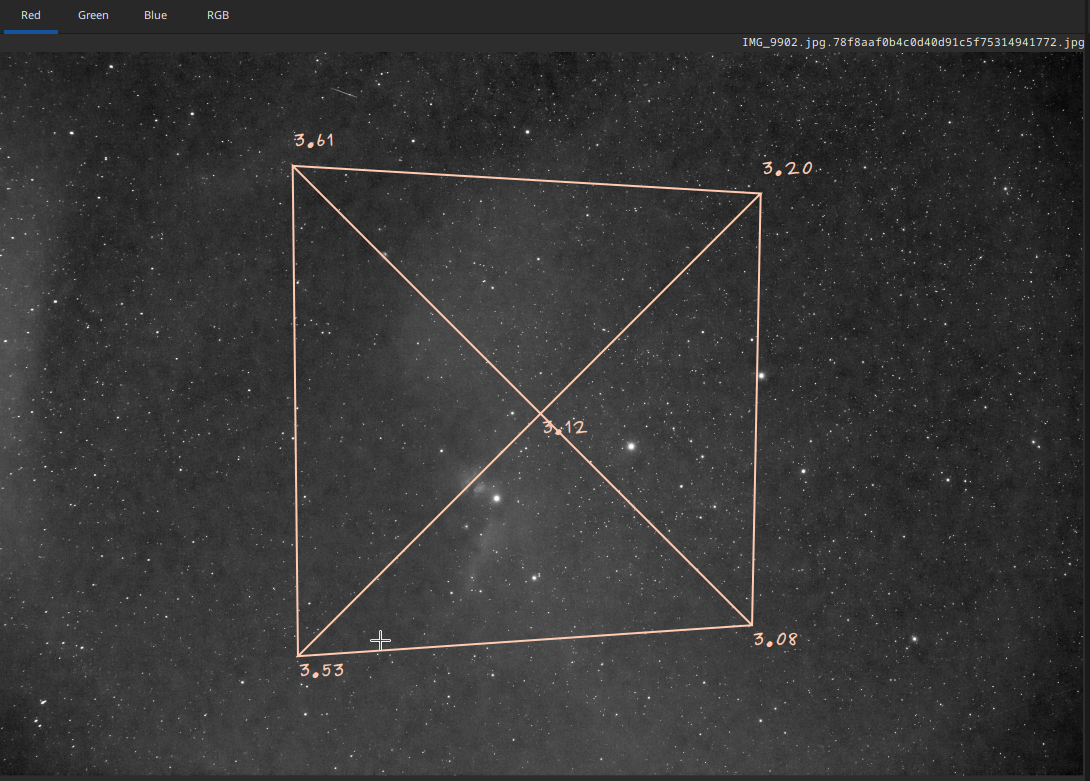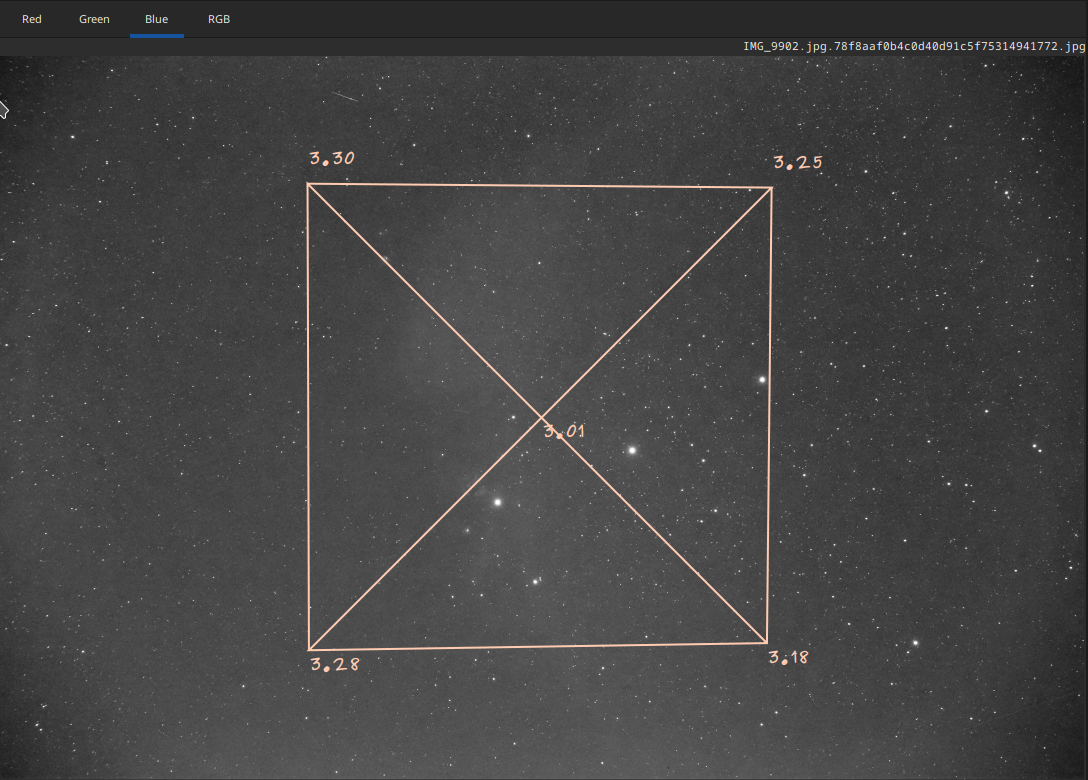-
Posts
6,209 -
Joined
-
Last visited
-
Days Won
4
Content Type
Profiles
Forums
Gallery
Events
Blogs
Posts posted by alacant
-
-
4 hours ago, daemon said:
4 hours of LRGB data from South Coast UK
When do we get the sequel '4 hours of LRGB data from South Coast Spain'?
Go on, treat yourself. You know you want to!
Lovely shot. Cheers.
-
1 hour ago, edarter said:
60mm seems a lot further
Baader recommend 58mm. Our hands on experience is that that doesn't give corner to corner over aps-c.
1 hour ago, edarter said:haven't cut the FT (and therefore its still on all the bearings)
?
Unless you deliberately cut too much, it remains on its bearings, cut or not cut.
-
1 hour ago, dark knight said:
an after market rail kit
6-r: The altitude adjustment is fixed and now has non-bolt-distorting smoothness.
Hey, sw listened to their clients. Or was it just chance?!
-
Hi
Whilst sw's quality control isn't perhaps the best, if you have the skill and patience needed to bring an eq6-r up to the required standard, that would be my recommendation. And hey, you may just get lucky and get an example which guides out of the box.
If you've ever pulled your neq6 apart, you'll be on familiar territory with the 6-r.
Cheers
-
 2
2
-
-
Hi
Assuming you have a suitable computer.
Hardware:
Either convert your existing guide telescope (looks familiar but I'd rather not guess) to accept a guide camera or, perhaps better:
https://a.aliexpress.com/_EHmNCD7
with
https://a.aliexpress.com/_EzkPFXF
This includes all the necessary cables. Fix the guide telescope rigidly across the top of the rings. Use a separate bar if necessary, but make it as immovable as possible.
Software:
https://openphdguiding.org/downloads/
Whilst you're waiting for delivery, read ALL of the excellent PHD2 software manual.
Good luck and HTH
-
Sorry. With the oag:
DEC is the limiting factor. Balance? But PLEASE look at the images rather than the numbers or graphs.Resist switch at 520mm is going to find a lot more to correct than at 240mm, so you may want to increase the minimum move. Also don't forget to decrease calibration step.
In the end, the only way with sw mounts is to pull apart, clean, re-grease and adjust. It's an hour or so's job which will save you countless more fiddling with settings in software.
Cheers and HTH
-
 1
1
-
-
28 minutes ago, OK Apricot said:
The subframes themselves were fine
I'm not surprised. Good polar alignment with e.g. 0.57" RMS over over an hour with similar ra and dec deviations is fine. The guiding was excellent!
TBH, I'd simply reduce the calibration step to around 500 and fiddle no more.
Just make sure you stick to 520mm focal length for guidescope as you had entered 240mm for one of the sessions.
My conclusion is that if you're still not satisfied with your final images, then you've the luxury of being able to eliminate guiding issues from the equation. You have the infamous 122s error from the mount stepper teeth which last time I looked, I don't think the asiair can correct. On a native PHD2, you could set PPEC to 122s. But hey...
Cheers and HTH.
-
21 minutes ago, Rowancummins said:
ir light inside the lens
Be sure to turn of IS and AF.
21 minutes ago, Rowancummins said:what is tilt
In this case, probably because the lens or one of its elements are not held orthogonally to the camera's sensor.
-
20 hours ago, edarter said:
Does it look acceptable?
We can't tell because we don't know the orientation of the photo. One way of indicating this is to place your finger over the tube opening to coincide with the focuser side of the tube.
19 hours ago, edarter said:could be causing these
All in the same direction getting worse to the left. I'd go for tilt. When you're certain the collimation is ok (use e.g. this guide), I'd look first at the cc attachment. Lose the M42 adapter and go for around 60mm from the m48 thread shoulder. Then the flexible stuff in the focuser, then the mirror cell, then ingress of the focuser barrel etc etc...
Don't overthink it though. It's easy to fix if you take it methodically, a step at a time.
Cheers and HTH
-
Hi
There's quite a bit of chromatism emphasising any reflection from the lens surfaces, shown mostly in the red, less so in green and almost flat in blue. Over full frame, tilt is critical, especially in a lens with 17 elements (34 glass surfaces).
If you have another eos adapter e.g. from another Tamron, I'd try that first.
Along with a shorter focal length at say f8, I'm sure a decent vset of calibration frames would go a long way to help in processing.
Or, as you have what looks like very good data anyway, just go ahead. I'd put good money on a stack of those images making for a stunning shot.
Cheers and HTH


-
4 hours ago, OK Apricot said:
was expecting a bit better
Hi
So the images with the oag were worse than with the separate guide telescope (SGT)? Along with the log, could you post an example frame from the SGT and from the oag?
The log files can be found in a folder called 'log' on the asiair internal card (or other usb device if you have set it up).
Not sure from where you're imaging, but Thor's Helmet is around 10º below the equator and so may be at a low enough altitude for calibration and guiding to be more affected by seeing than at higher altitudes. Try calibrating on the meridian but above the equator before slewing to your target?
Finally, although you almost certainly would with a reflector, I'm not sure if you will see much difference between using a SGT compared with an oag on a refractor at ~500mm focal length.
Cheers and HTH -
On 16/10/2020 at 12:25, Budgie1 said:
Juan sells a new 4000D ready modded for £429
+1. Juan knows his stuff when it comes to DSLRs.
The 2000d is fine, but there are better. @Budgie1's advice of the 4000d is good. For astro, any of the 18mp eos cameras would be preferable. The no frills 4000d, ideal.
Cheers and HTH
-
 1
1
-
-
27 minutes ago, ryanh said:
Am i doing something wrong?
Hi
Yes.
To achieve the magic 55mm of backfocus, the field flattener (FF) must be attached directly to the t-ring. The extenders need to be on the telescope side of the FF.
Cheers
* I've no idea why ES make their tubes so short.
** If you're in the market for a different FF anyway, for corner to corner, even over full-frame, this one is the best we've found so far.
-
 1
1
-
-
11 hours ago, StuartT said:
What's stopping it?
The settings you have given for PHD2 to work with.
It looks like you've entered the focal length of your imaging telescope, 808mm, rather than your guide telescope.
With camera and mount connected, make a new profile. Be sure to enter only what it asks. Change nothing.Cheers and HTH
-
4 minutes ago, Astro74 said:
which model
Any eos with the 18mp sensor works well for astro.
Cheers
-
 1
1
-
-
On 29/01/2023 at 19:44, quimby44 said:
difference between fpl51 and fpl53
Hi
We find that by far the biggest influence upon image quality is the seeing, followed by the quality of your guiding, then... etc.
I guess you'd need exceptional conditions and a top of the range mount to be able to differentiate between types of glass. But hey, I'd love to see a side by side and be proved wrong.
Cheers
-
On 30/01/2023 at 22:35, kelly324 said:
Canon EOS 4000D
I don't know anything about the rest of your equipment, but the simple, no nonsense 18mp 4000d is one of the best we've tried for astro.
Cheers and HTH
-
Hi
I think that Canon have reached a sweet spot with the 800d, although I'm surprised not to see more red bits. I suppose it depends upon what filter(s) were removed. Some nice detail emerging toward the centre of the galaxy and the 72 has done a good job controlling the stars.
Have a look at the colour balance maybe? Siril has an excellent colour calibration algorithm. Not a fan of processing involving star removal. Try without perhaps...
Cheers and HTH
-
 1
1
-
-
15 hours ago, edarter said:
the ft still protrudes in to the ota by 14mm.
And still it produces distorted stars?
-
-
6 hours ago, edarter said:
MPC Mk3
Yep. Unless your example came with a different focuser and judging by your image, you'll be fine.
Certainly try it first. If you are certain that your collimation is perfect and you can still discern non circular stars at one side of an image, then would be the time to operate.
Cheers
-
7 hours ago, Leti Theobald said:
need to learn manual
Absolutely +1
Automation scripts are all well and good... Until it doesn't work!
Cheers
-
5 hours ago, Ratlet said:
just type =2048
Careful...
Do we know the OP's camera? The offset varies depending upon the make and model.
Cheers
-
7 hours ago, Leti Theobald said:
Is there a simple way to stack the comet and ignore the stars?
-
 1
1
-
 1
1
-















2 nights combined data M42
in Getting Started With Imaging
Posted
Yes, it has. Lovely data as usual. Thank you for giving us the privilege of processing it.
Here it is as HOO:
Cheers.